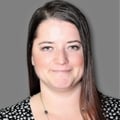
If you are not redirected within 30 seconds, please click here to continue.
Samedi: 10h – 16h HAE

If you are not redirected within 30 seconds, please click here to continue.
If you are not redirected within 30 seconds, please click here to continue.
Calgary’s hailstorm cost $2.8 billion in insured losses. Is hail insurable?

The hailstorm on August 5, 2024, in Calgary has now been declared the second-costliest natural disaster in Canadian history, with insured losses totaling $2.8 billion.
The storm brought intense hail, winds, rain, and caused localized flooding to parts of the city, leaving behind shattered windows, dented vehicles, and extensive damage to homes. Residents reported hailstones the size of golf balls, and reports show that about one in five homes was affected.
This event serves as a sobering reminder of the increasing severity of weather-related events across Canada and underscores the importance of preparedness, including the need for homeowners and vehicle owners to understand their insurance coverage and make sure they’re adequately protected against hail damage. So, when disaster strikes, you’re not forced to deal with the aftermath all on your own.
Related: Is severe flooding making your home uninsurable?
Does your home and auto insurance policy cover hail damage?
When it comes to hail damage, it’s important to review your insurance policy to make sure you’re fully covered. Fortunately, most people are likely to have some level of insurance coverage for hail damage included in their standard home or auto policies.
“It's not like sewer backup or flooding – hail is included with your standard homeowner policy,” says Anne-Marie Thomas, director of consumer and industry relations for the Insurance Bureau of Canada (IBC).
“It's included in auto policies, but only if you've purchased a comprehensive or all perils coverage,” she further explains. This means that if you only have mandatory minimum coverage, your vehicle won’t be covered in the event of any hail damage.
Related: Specified perils vs. Comprehensive car insurance: what’s the difference?
Thomas notes that comprehensive coverage typically includes protection for glass breakage, covering your windshield, side mirrors, and rear windows. She notes that some people—especially in Alberta—choose endorsements like the Alberta Standard Endorsement Form (SEF 13D) or, in Ontario, the Ontario Policy Change Form (OPCF 13C).
By opting for these endorsements, you are essentially opting out of full glass coverage in exchange for a lower insurance premium. This means that while you still have some coverage for glass damage, it is restricted, typically covering only specific types of damage like those caused by fire, theft, or vandalism, but not by rocks or debris.
“If your windscreen is damaged or cracked by hail or anything, then you have no coverage [if you opt out],” she says. “You want to make sure that you check your policy and ensure that you have all of the coverage you think that you have, as well as the coverage that you need.”
This is especially important as the incidence – and severity – of weather-related events continues to increase year after year. In fact, the summer of 2024 shattered records for severe weather damage with over $7 billion in insured losses from floods, fires, and hailstorms across the country. As noted earlier, the most recent Calgary hailstorm caused an astounding $1 billion in insured damages – and that’s just the losses that are covered by insurance.
“That's excluding the people who either didn't have coverage on their car, they didn't have comprehensive insurance, or they didn't have homeowners' insurance,” says Thomas, emphasizing that the total losses are likely much higher.
Read more: What will my car and home insurance policies cover when it comes to storm damage?
Practical ways to protect your home from hail
While you can’t control the weather, you can take steps to reduce the impact of future hailstorms. Here are some measures that can help protect your home:
Storm-resistant roofing: Upgrading your roof to hail-resistant materials is one of the most effective ways to protect your home from severe weather. Options such as metal roofing, clay tiles, or impact-resistant shingles are specifically designed to withstand the force of hail and reduce the likelihood of costly damage.
Reinforced windows: Upgrading to double-paned or laminated glass is a smart investment to protect your home from hail damage. Both options not only reduce the risk of breakage from hailstones but also improve energy efficiency and reduce noise, making them a practical and cost-effective upgrade.
Secure siding: Choosing durable, hail-resistant siding materials can make a big difference in protecting your home. Options like fibre cement and engineered wood are designed to withstand the impact of hailstones far better than traditional vinyl siding, which is prone to cracking and denting.
Maintain landscaping: Regularly trimming back overhanging tree branches can prevent them from breaking off and causing significant damage to your home or vehicle during a hailstorm. You should also secure loose outdoor furniture that could cause additional damage.
Practical ways to protect your vehicle from hail
Similarly, to minimize the damage caused by hailstorms, consider these strategies to safeguard your vehicle:
Park indoors: Whenever possible, park your vehicle in a garage or under a covered structure, especially during storm warnings. Garages offer the best protection against hail, but if you don’t have access to a garage, look for other options such as carports or parking decks.
Car covers: If you don’t have access to a garage or covered parking, investing in a heavy-duty hail-resistant car cover can be a smart move. These covers are designed with durable, impact-absorbing materials that can help minimize dents and scratches caused by hail.
Stay vigilant during storm season
While IBC’s Thomas says that investing in hail-resistant upgrades isn’t likely to have an effect on your insurance premiums, it can protect your property and save you the hassle of having to replace items or submit an insurance claim.
She says that staying alert to changing weather conditions is crucial, especially if you live in Alberta’s "hail alley." She advises Canadians to keep an eye on the forecast and watch for signs of an impending storm, such as dark clouds, thunder, strong winds, and heavy rain.
Being aware of these warning signals can give you precious time to take quick protective measures, like moving your car into a garage or securing loose outdoor items, minimizing potential damage.
“If you know it's coming, then you have a minute to get yourself a little bit prepared. It really is as simple as checking your coverage and watching the weather.”
By understanding your coverage and making preventative investments, you can minimize financial losses in the face of unpredictable weather, including damage caused by hail.
Read next: 12 tips to protect your home for winter
Don't waste time calling around for auto insurance
Use Rates.ca to shop around, and compare multiple quotes at the same time.
Get money-saving tips in your inbox.
Stay on top of personal finance tips from our money experts!










